As Indian Prime Minister Narendra Modi visits the United States, it’s worth putting the India-U.S. relationship in perspective and considering how far it has come in recent years. Fifteen years ago, there were U.S. sanctions on India. More recently, the Obama administration has said the U.S. relationship with India “will be one of the defining partnerships of the 21st century.” These 14 charts and graphics show that the relationship has changed in other ways as well, including the areas of high-level India-U.S. engagement, economic and defense ties, people-to-people connections amongst Indians and Americans and future opportunities to increase bilateral cooperation.
- High-level India-U.S. engagement has been more frequent in the last decade and a half than in the years before that.
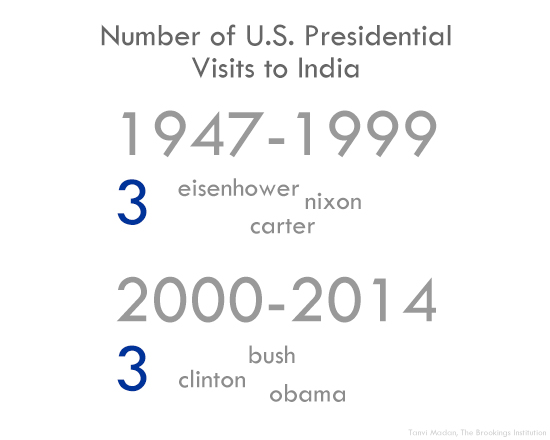
- In recent years, the India-U.S. relationship has enjoyed bipartisan support in the United States, with both Republican and Democratic administrations and legislators indicating support for it.
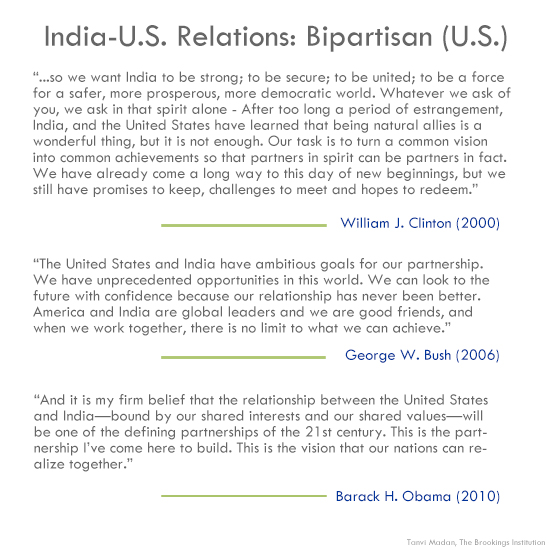
- In India too, Bharatiya Janata Party-led and Congress party-led governments have worked to strengthen the relationship.
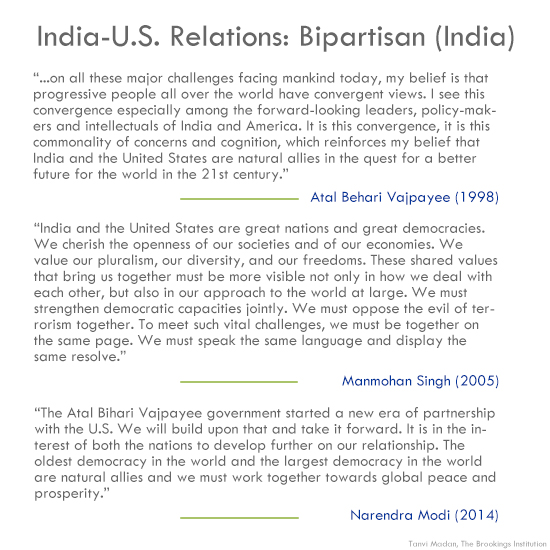
- The bilateral economic relationship has grown in the last decade, but there is still a lot of room for it to develop…
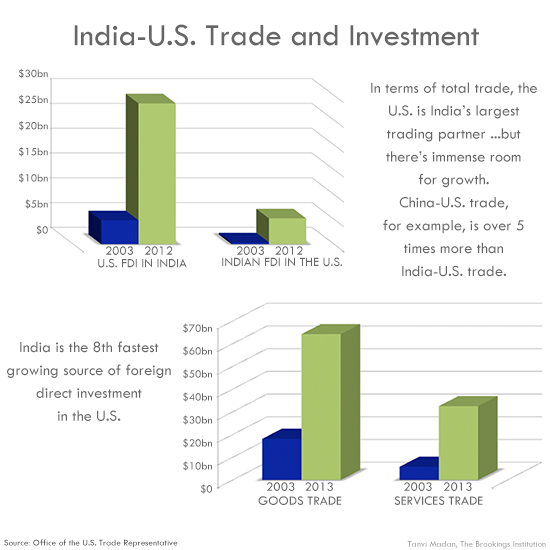
- And defense ties between India and the United States have increased as well.
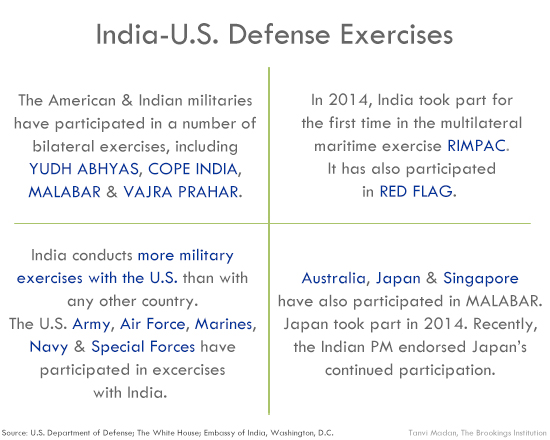
- The defense trade relationship has been a key element of this cooperation, with hopes for much more on this front.
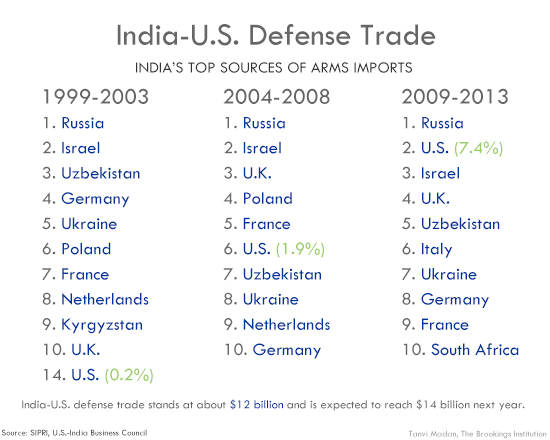
- Beyond economic and defense ties, there’s been more people-to-people engagement than ever before, with increased travel from the United States to India…
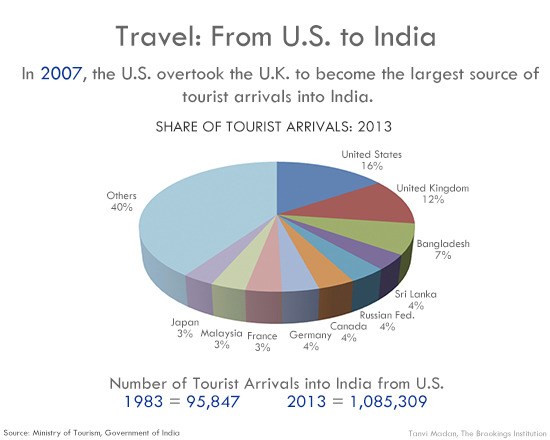
- …and India to the United States.
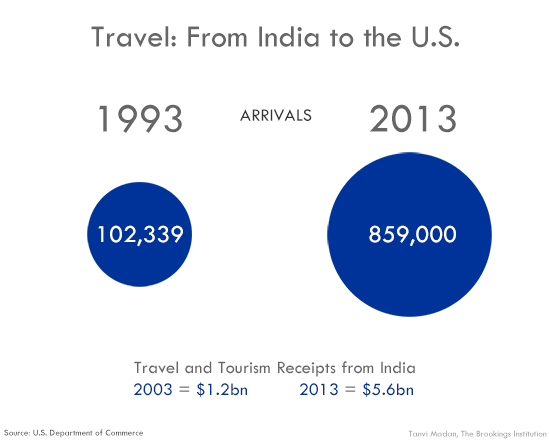
- The number of Indian students traveling to the United States for higher education has also grown, tripling in the span of a decade.
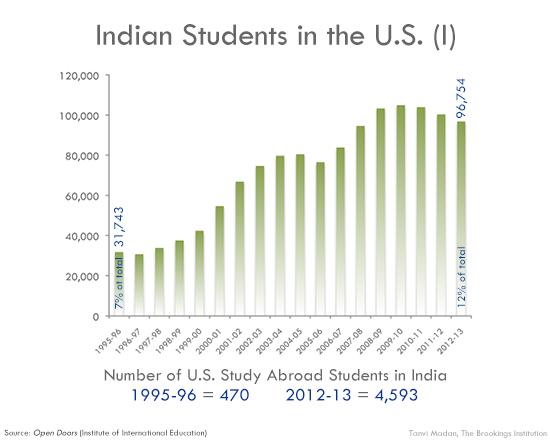
- As Neil Ruiz points out in his recent report, significantly, these students are enrolled in graduate degree programs and a majority are in the science, technology, engineering and math fields.
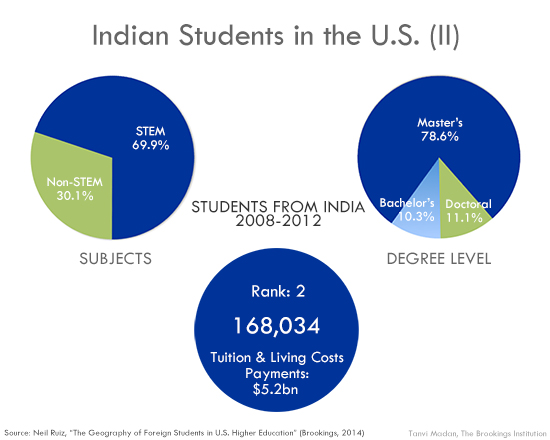
- While India has economic and defense ties with other major powers as well, one of the elements that makes its relationship with the United States different is the significant Indian diaspora in the United States that has grown over the last two decades. This diaspora not only provides a cultural link to the United States, but is also a source of revenue for India.
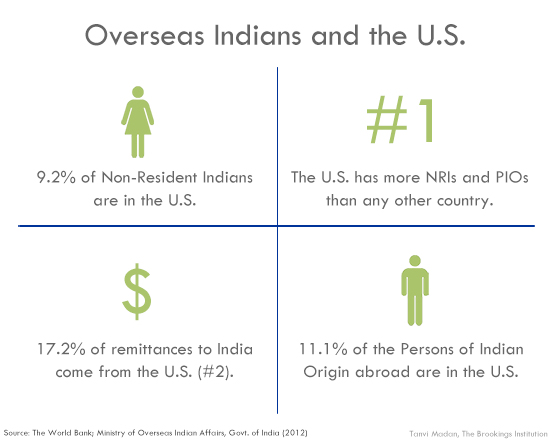
- Indian Americans are running everything from government agencies to states to major companies to research facilities; they’re headlining news shows and primetime sit-coms. Still only about 1 percent of the total U.S. population, “Asian Indians”—as the Census labels them—on average are highly educated and have a household income almost double that the national average.
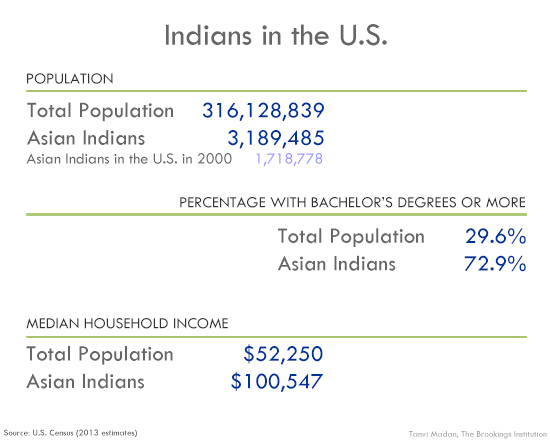
- There also seems to be more popular support than before in India and the United States for strengthening the relationship.
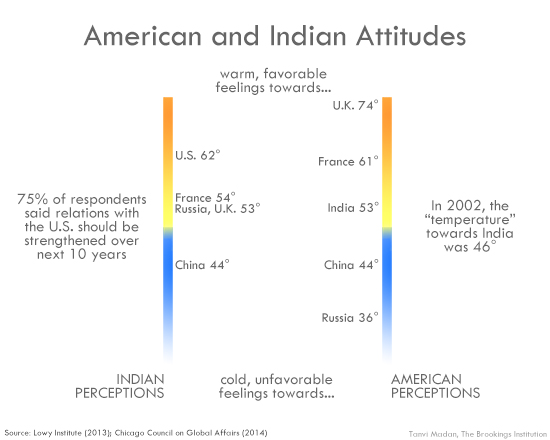
- And there are various areas where the two countries can increase their cooperation, but to move from opportunities to outcomes, India and the United States will also have to deal with certain obstacles along the way…something both Prime Minister Modi and President Obama will be well aware of.
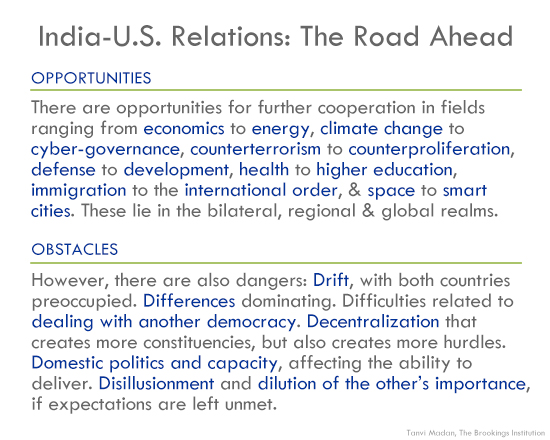
In advance of the Prime Minister Modi’s and President Barack Obama’s meeting in Washington, the Brookings India Initiative, which consists of the Brookings India Center in New Delhi and the India Project at Brookings, released a briefing book of 28 policy memos by over two dozen Brookings scholars highlighting areas of promise in the partnership between India and the United States and suggesting ways to translate those opportunities into outcomes.
The Brookings Institution is committed to quality, independence, and impact.
We are supported by a diverse array of funders. In line with our values and policies, each Brookings publication represents the sole views of its author(s).



Commentary
India-U.S. Relations in 14 Charts and Graphics
September 26, 2014